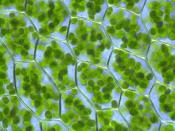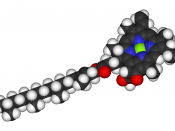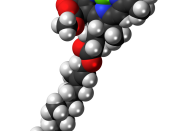When you and me eat, we find our food. When plants eat, they make their own food and energy. They make their food and energy through a process called photosynthesis. Through photosynthesis oxygen is also produced. Photosynthesis is 'a process in which green plants synthesize carbohydrates from carbon dioxide and water....The reverse of this reaction provides energy for plants, for animals that eat plants, for animals that eat animals that eat plants' for animals that eat animals that eat animals that eat plants, etc. (Levine 726) All humans rely on these plants to produce oxygen from photosynthesis. The presence of light and of the green pigment chlorophyll makes the change of carbon dioxide and water to glucose and oxygen possible. It was Jan Ingenhouz with Jean Senebier in Geneva that founded the basic gist of the theory of photosynthesis in plants.
My experiment involves testing different brands of plant food on plants to see what brand of plant food makes the plant grow the tallest.
I will test three types of plant food on three sets of plants and one set with no food. I will water the plants all the same amount and let all the plants get the same amount of sun, then measure the height of all the plants at the end of six weeks and record the data.
The first step of photosynthesis is the absorption of light by a chlorophyll molecule. 'The energy of the absorbed photon is transferred from one chlorophyll molecule to another until it reaches a site called a reaction center....One oxygen molecule is produced per eight photons absorbed.' (Alberty 708) James Huheey, professor at the University of Maryland, talks about chlorophyll in his book Inorganic Chemistry:
'Chlorophyll absorbs low-energy light in the far red region....Such absorption serves a...



Essay
Very good essay, although instead of quoting big paragraphs (or having one quote after another) you could have re wrote some of the quotes in your own words.
0 out of 0 people found this comment useful.